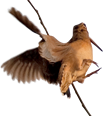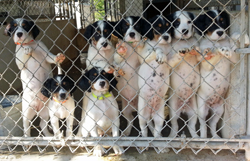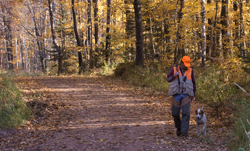What do bobwhite quail do all day?
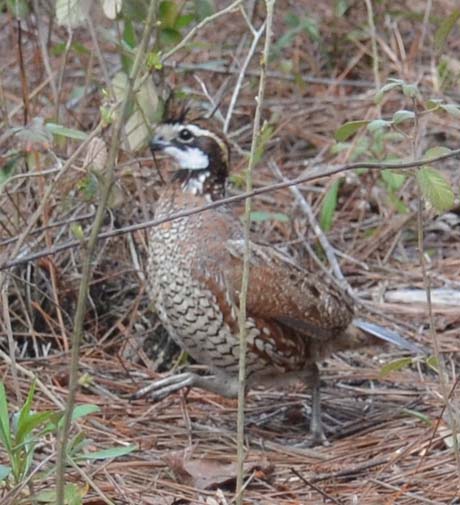
A male bobwhite quail (Colinus virginianus) walks swiftly from its roosting site.
Jerry and I became even more fascinated by bobwhite quail while spending the winter training on a quail plantation in southwest Georgia.
First of all, they are tiny…..and weigh just 6 oz. Like ruffed grouse, they are perfectly plumaged as to be practically invisible, even when looking straight at them. We discovered that they are as wily and evasive as grouse, too. To avoid dogs and hunters, they run fast and far or they burrow in/under a clump of wiregrass or other cover where even the most tenacious Labrador or cocker spaniel will have difficulty with location.
We adore the distinctive “bob white, bob white” whistle. Perhaps most of all, though, we never tire of the exhilaration, fast action and flurry of wings when a covey rises.
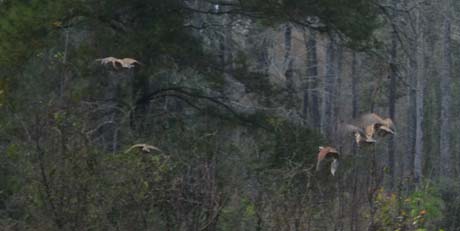
Bobwhite quail fly into heavy cover after the flush.
But we wanted to know more so Jerry spent hours studying the Tall Timbers Research Station and Land Conservancy website. Tall Timbers is located outside Tallahassee, Florida, on a former quail plantation. It is widely regarded for its research and as a resource in the areas of fire ecology and wildlife and game bird management of the Southeastern Coastal Plain.
One of the cool things they researched during a hunting season was “Patterns of Bobwhite Covey Activity.” Workers radio-tracked four coveys of quail continuously, recording their location and activity level every 15 minutes from daylight until dark. They overlaid that data onto weather data collected on the same 15-minute intervals at the Albany, Georgia, airport.
Generally, coveys ranged no more than 200 to 300 yards during a single day and 10 to 15 acres throughout the season.
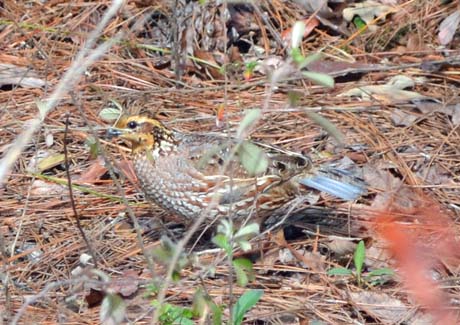
A female bobwhite quail is hard to distinguish from among fallen pine needles.
And the daily habit?
Second hour of daylight: Covey moves off their roost and enters into period of peak activity. This high level of activity lasts for 1 to 1½ hours and then tapers off.
Midday: Very little activity for 3 – 4 hours. Coveys often move to heavier cover to loaf.
Around 3:00 pm: Activity levels start to pick up. Coveys usually have periods of feeding and then going to roost.
The research project also proved that quail covey movements were influenced by weather.
• Active in cold temperatures and conditions with high humidity and light winds.
• Inactive in hot temperatures and conditions with low humidity and high winds.
• Inactive when raining.
• Very little activity when the wind was from the east.
• Activity levels tended to increase the day before a change in the weather suggesting that quail can sense an approaching weather event.

